The difference of story flavor and taste between Yunnan coffee iron card and Katim small grain coffee bean varieties
Yunnan coffee, also known as Yunnan small grains, the particles of coffee beans are uniform and full, mellow and moderate taste. Qianjie likes Yunnan coffee because it is Chinese's own coffee. There are two Yunnan small grains of coffee in Qianjie, one is Katim, the other is tin pickup coffee beans. Because Katim has the gene of Luodou, the flavor and taste of Katim is slightly inferior to that of iron pickup coffee beans. Yunnan has good coffee growing conditions, but Qianjie believes that the quality of Yunnan coffee has not yet reached the standard of fine coffee. The first is the variety. Katim is mostly planted in Yunnan, which is not as superior as the iron pickup coffee bean in the first place. Secondly, many use anaerobic treatment, although this is a novel treatment, but it masks the original flavor of coffee, and how to talk about fine products.
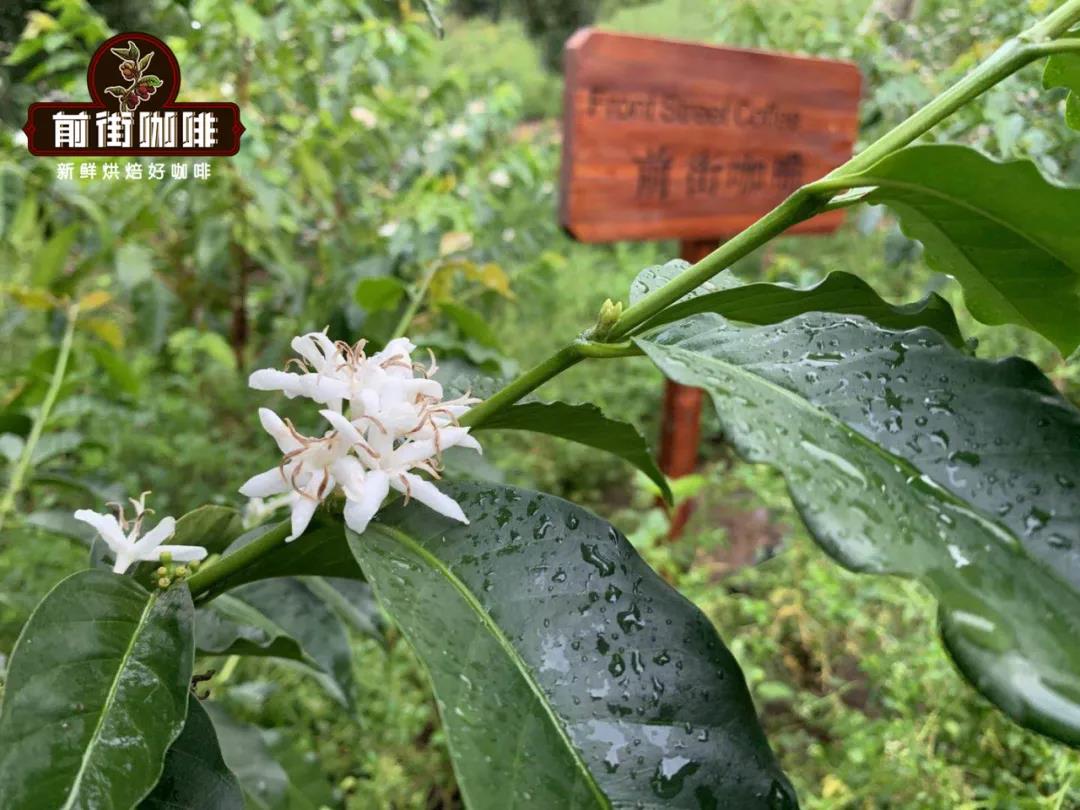
Qianjie Coffee has long grown Yunnan coffee beans in an area bordering Yunnan and Myanmar. Qianjie believes that choosing the right variety, planting it at an appropriate altitude, and experimenting with a treatment that can express its unique flavor after maturity is the only logical relationship that Qianjie Coffee believes that fine coffee can have obvious regional flavor. it is also the work led by Yunnan Agriculture Department recently: to establish the flavor map of Yunnan boutique coffee. This sentence means to find out the regional flavor of Yunnan boutique coffee. Why do Yunnan beans like to pay so much attention to treatment in recent years? In fact, they are trying to get around the relationship between the three, and the varieties they grow can no longer be changed (99% of the varieties planted in Yunnan are Katim varieties, which are hybrids of medium and small species, because it takes four or five years for another new variety to blossom and bear fruit). Altitude can not be changed, as it happens that the market is also popular with the treatment method, so you will find that many Yunnan beans emphasize the post-treatment method, which only changes the treatment method. It is strange and normal to put aside the variety and altitude.
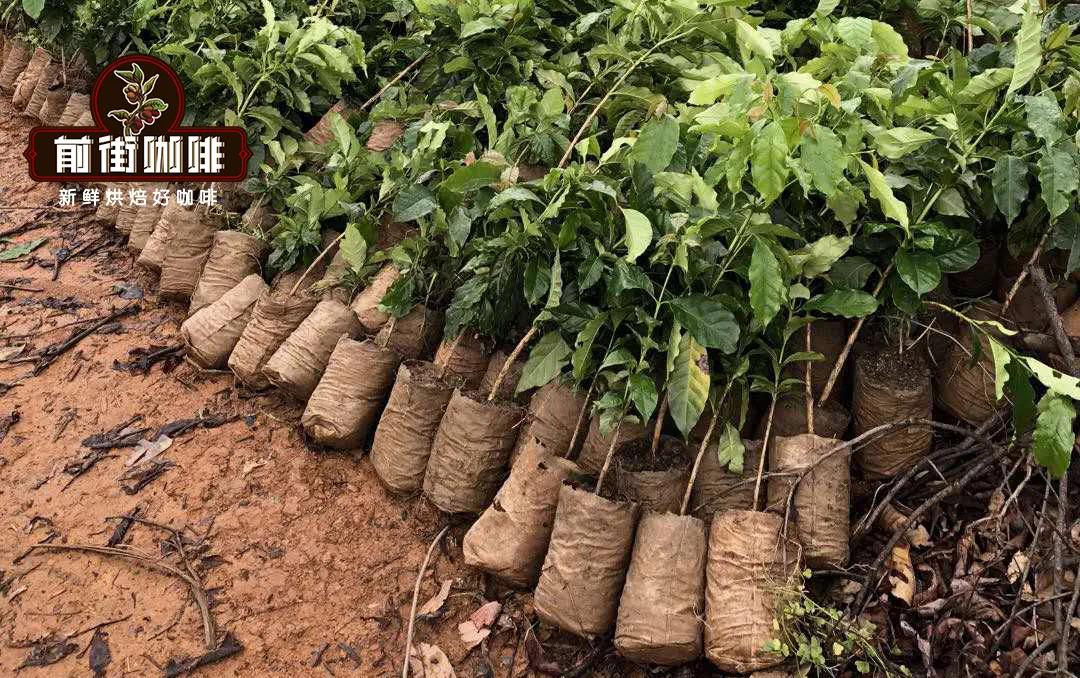
At the same time, Qianjie also visited the Institute of Thermal Sciences (Institute of Tropical Agricultural Sciences), which has in-depth research on coffee cultivation and the coffee provenance bank of the Ministry of Agriculture, and a small number of farmers who have grown fine coffee. Find out the reasons why Tibika and Bourbon, the mainstream varieties of fine coffee, are not grown in Yunnan. Kadim is too cheap and can only be sold as unified goods, about 15-20 yuan a kilogram, the price is difficult to offset the picking work and fertilizer, and farmers are unwilling to take care of it. The output of iron pickup and bourbon is low and easy to get sick, and the cost of management and protection is high. it takes longer to explore, not to mention whether it can form a unique flavor. On the one hand, curry farmers do not have a sense of fine coffee. On the other hand, even if you know it, it will take a few years to cut down the old tree and replant it.
Coffee producing area
The western and southern parts of Yunnan Province are located between 15 °N and the Tropic of Cancer, and most areas are 1000-2000 meters above sea level. The topography is dominated by mountains and slopes, with large ups and downs, fertile soil, sufficient sunshine, rich rainfall and large temperature difference between day and night. These unique natural conditions form the particularity of Yunnan small grain coffee taste-strong but not bitter, fragrant but not strong, slightly fruity.
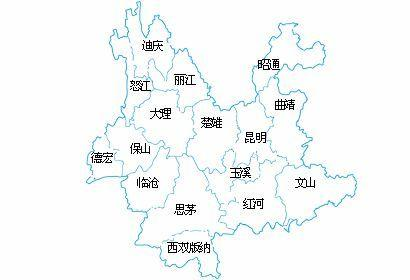
Pu'er, Xishuangbanna, Wenshan, Baoshan, Dehong, Lincang and other places in the south and west of Yunnan are all the distribution areas of small-grain coffee in Yunnan.
Dehong: it has the laudatory name of "hometown of Chinese coffee". The coffee planting in Dehong Prefecture is above 1000 meters above sea level, of which 30, 000 mu are planted in the mountains above 1600 meters above sea level. in addition, the coffee grown in Dehong Prefecture mainly uses organic fertilizers and organic pesticides, resulting in high quality coffee. it is one of the rare high-quality coffee producing areas in the world.
Baoshan: the cultivation of coffee in Baoshan began in the mid-1950s, and the first coffee seedling was introduced by the late patriotic overseas Chinese Mr. Liang Jinshan in Southeast Asia. In recent years, with the expansion of international trade, Lujiangba's small-grain coffee is more famous. Merchants in Europe, the United States, Egypt, Hong Kong and Macao, especially in Britain, the United States, Egypt, Hong Kong and Macao all regard it as top-grade coffee, and their products are in short supply. In December 2010, after being examined and approved by China's General Administration of quality Supervision, Inspection and Quarantine, it was decided to implement national geographical indication product protection for "Baoshan small Coffee".
Lincang: because of its unique geographical location and climatic conditions, Lincang has become the focus of many coffee enterprises, and has successively established 200 mu and 100 mu of high-quality coffee breeding bases in Mengding Town and Lincang Happiness Farm in Gengma Autonomous County of the city. coffee is planted in Gengma, Zhenkang, Yun County, Cangyuan, Yongde and other places.
Pu'er: tea village Pu'er has cultivated coffee for 150 years. At the end of 1990s, Pu'er City began to cultivate coffee as a dominant backbone industry to adjust the industrial structure and increase farmers' income.
Yunnan coffee varieties
At present, Katim coffee beans are the most widely planted in Yunnan, while there are a small amount of iron pickup coffee beans and bourbon coffee beans in Baoshan area. Although they all belong to Arabica species on a large scale, these varieties are very different in nature.
Iron pickup Coffee Bean (typica): the most classic high-quality Arabica species, many commercial improved varieties are derived from this. Iron pickup coffee beans have excellent taste and are recognized as a boutique coffee variety, but the yield is very low and vulnerable to rust, so more manpower management is needed. Iron pickup coffee beans are native to Ethiopia and southeastern Sudan and are the most widely cultivated variety of coffee in the Western Hemisphere. The plant is stronger, but not light-tolerant, and the yield is higher in Hawaii. The top leaf of the iron pickup is red copper, which is called red top coffee.
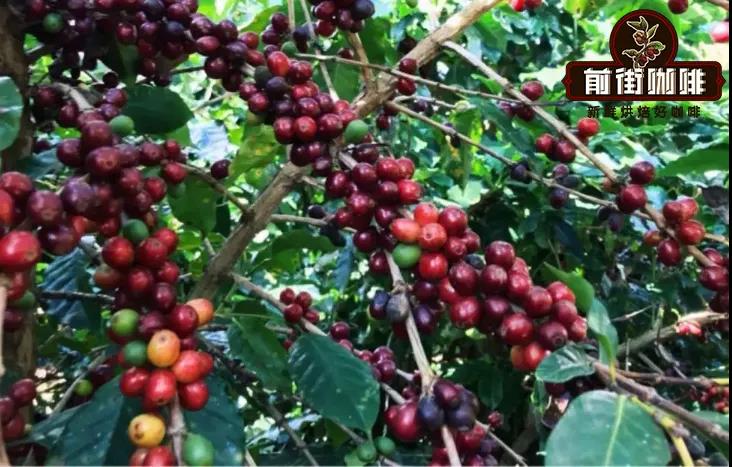
Bourbon Coffee Bean (bourbon): this variety is derived from the Iron pickup Coffee Bean, which was grown by the French on the island of Bourbon (now Reunion) in 1708. Bobang also has a beautiful aroma and rich flavor, which is higher in yield and growth than iron pickup trucks. It is suitable for planting in an area of 1200 million meters, but it is less resistant to diseases and insect pests and is more sensitive to strong winds and heavy precipitation. Bourbon coffee is a variety of small-grain coffee second only to iron pickup. At first, the main branch and trunk grew upward at 45 degrees, and with the fruit load, the lateral branches were denser, the fruit was more, and the yield was higher. But the berries are smaller and ripen more slowly. Bobang terminal bud tender leaves are green, called green top coffee.
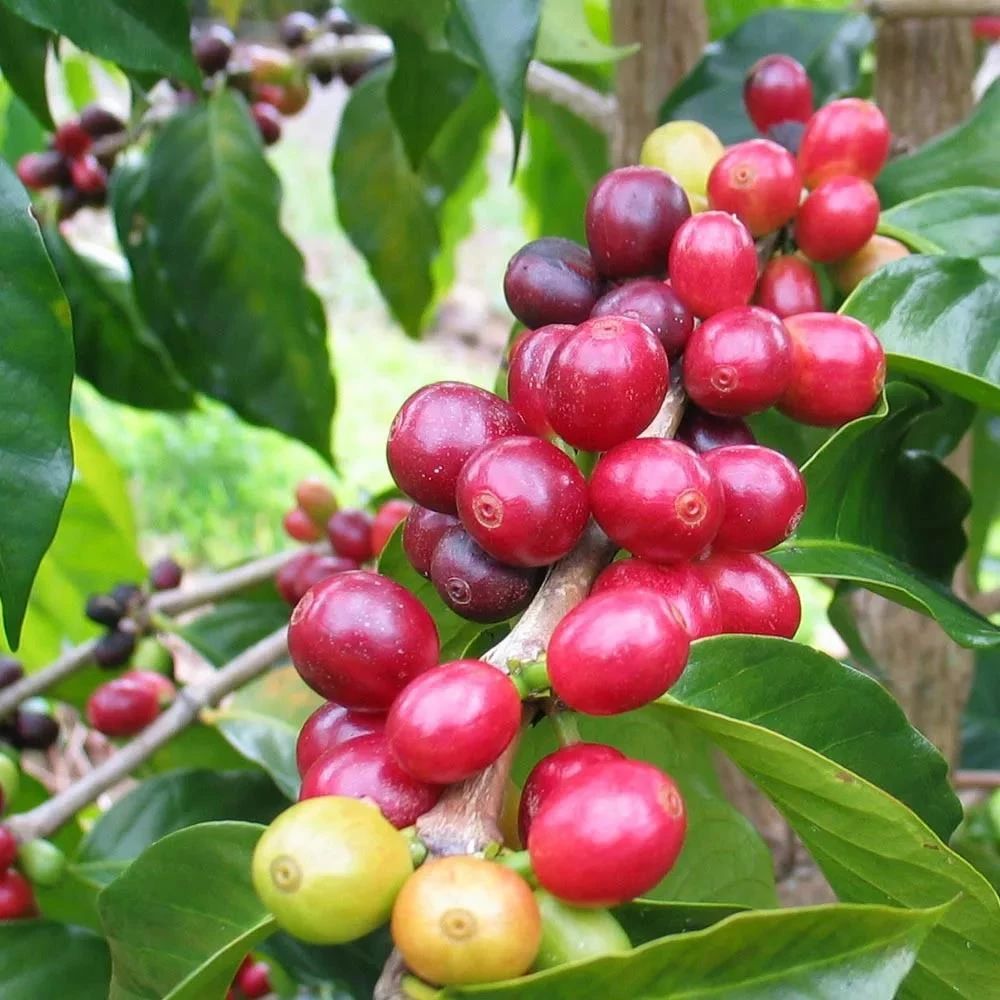
Katim coffee beans (catimor): Katim is not pure Arabica pedigree, it is a hybrid of Timor (which belongs to Robbsta) and caturra (a variety of bourbon), so catimor has 25% robusta pedigree, and its Robusta pedigree also determines its taste defects: the aroma is not rich enough, and the overall taste is bitter, prone to astringent and more irritating mildew.
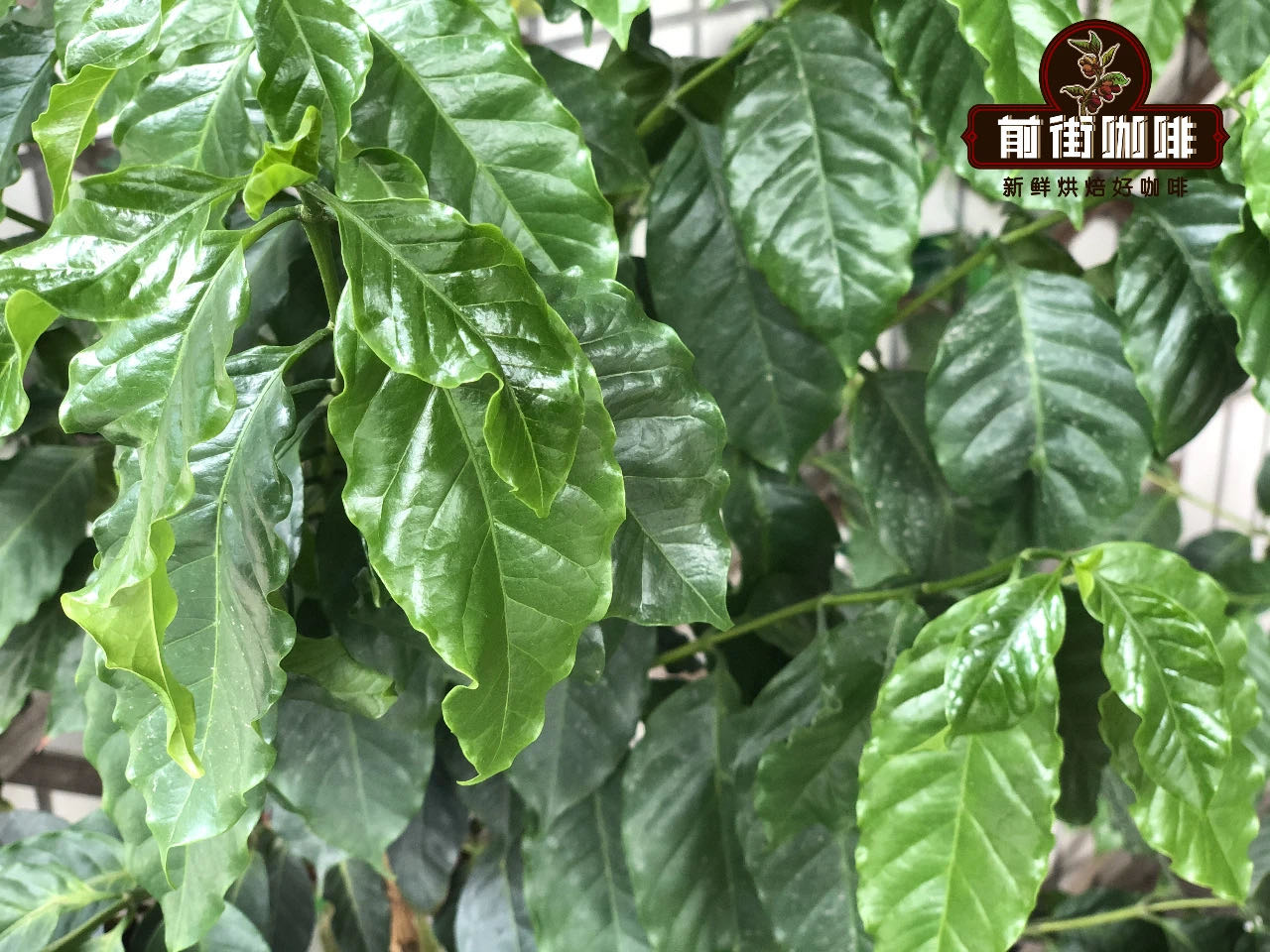
Qianjie mainly grows tin card varieties in Yunnan. Although Arabica coffee is grown and varieties are paid attention to, there is no guarantee that high-quality coffee will be produced immediately. Qianjie is convinced that nothing in this world is so easy. After many times of variety breeding and the experiment of refined treatment after bearing fruit, several years have to go by. Boutique coffee this difficult road always needs some people to explore, try perhaps there is some hope, no, it is always a blank.
Coffee bean treatment
Coffee farmers first pour the picked coffee berries into a large tank, the immature inferior beans will surface, and the ripe and full fruits will sink to the bottom of the water, and the defective beans (fruits) floating on the surface will be removed. Then use the pulp sieving machine to remove the outer skin and pulp of the coffee fruit, when the coffee beans are still attached to a layer of slippery pectin. Put the coffee beans with pectin in the fermentation tank for 16 hours and 36 hours, during which the microbes will decompose the pectin. After the fermentation is completed, a large amount of water is used to remove the pectin residue from the coffee beans. Finally, the washed coffee beans are dried in the sun. The water washing method has both soft and strong acidity, suitable mellow, sweet and spicy.
Two Yunnan coffee beans are currently on the shelves in Qianjie-Yunnan Huaguoshan and Yunnan small grains of coffee.
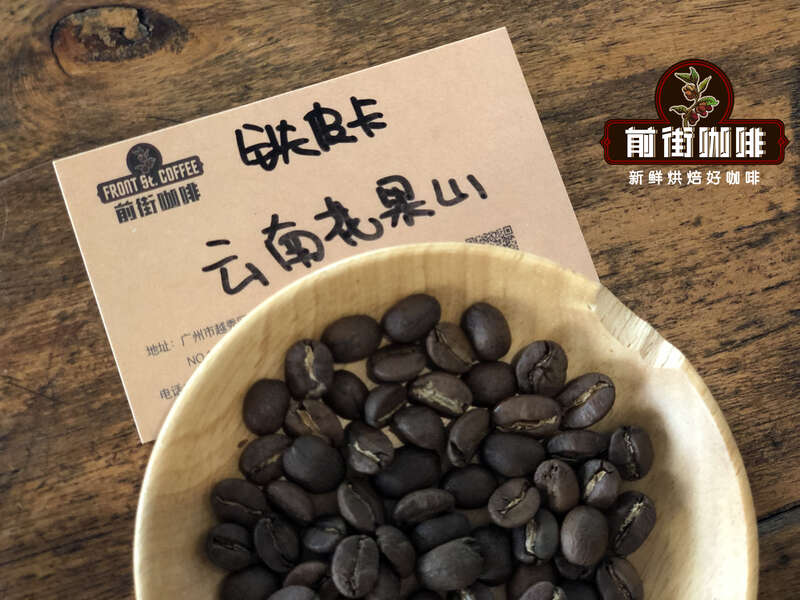
Coffee producing area: China, Yunnan, Baoshan
Variety of coffee: iron pickup Typica
Production altitude: 1200m
Quality level: AA
Treatment: washing
Baking degree: medium baking
Suggestion on roasting coffee in Yunnan Huaguoshan, Qianjie
The moisture content of beans is 10.9%, so the baking plan is to put 200 degrees into the beans, then fire the small throttle to speed up dehydration, and open the stroke door and medium heat at the end of the dehydration stage so that Maillard's reaction time is not too hasty and will be released in 3 minutes. Temperature recovery point: 1 minute 32 °c, yellow point: 5 min 40 °c, 148.5 °c, first explosion: 8 minutes 59 seconds, 188.0 °c, development 3 minutes out of the furnace: 12 minutes 39 °C, 196 °C.
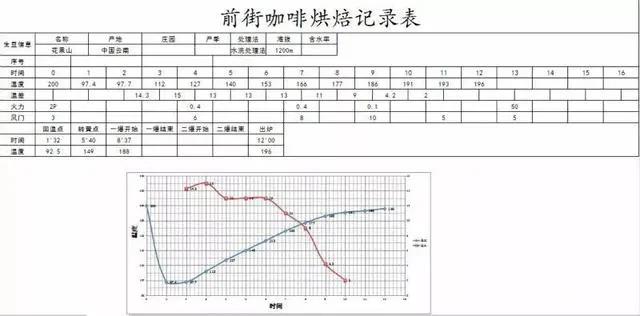
Measurement report of Yunnan Huaguoshan Coffee Cup in Qianjie

After baking for 12 hours, the cup shows rich aromas of fruit, melon, herbs, supple on the palate, mid-course nuts, milk chocolate, lively and bright sour plums at the end, good balance on both cheeks, medium body full, sweet and sour first, apricot, citrus sour, aftertaste black tea, a little brown sugar.
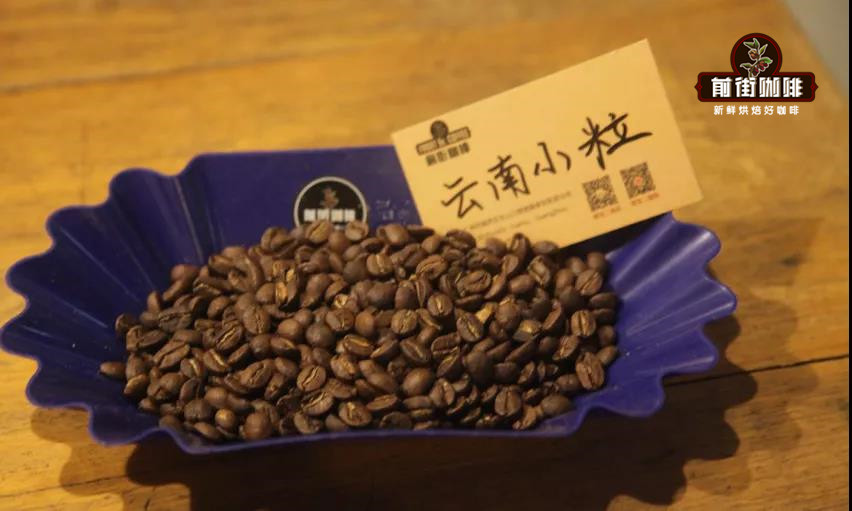
Yunnan small grain coffee
Producing area: Baoshan, Yunnan
Altitude: 1200m
Treatment method: washing
Variety: Katim
Suggestion on roasting Yunnan small Coffee in Qianjie
The furnace temperature is 190 ℃, the firepower is 120, and the throttle is set at 3; the temperature recovery point is 1 ", and the throttle is opened to 4 at 145℃, and the firepower remains unchanged; when the furnace temperature is 166℃, the bean watch turns yellow, the grass smell disappears completely, and enters the dehydration stage. When the furnace temperature reaches 188℃, the firepower is adjusted to 60 ℃, and the throttle is 5. The smell of toast obviously changes to the smell of coffee, which can be defined as a prelude to an explosion. At this time, it is necessary to listen clearly to the sound of the explosion point. When the sound of the explosion point begins to explode, the throttle will remain unchanged. After an explosion, the development will take place for 3 minutes, and 198 ℃ will be put into the pot.
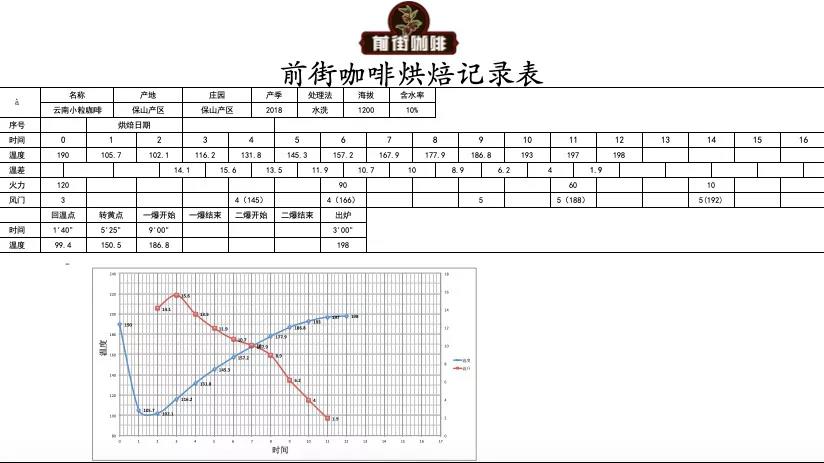
Test report of Yunnan small Coffee Cup in Qianjie
The entrance is supple, the aroma of Asian herbs is lively and bright, the cheeks are lively and bright, the cheeks are sour, mellow and balanced, the layers are rich, and the flavors of dark chocolate, honey and sucrose are obvious. After complete cooling, brown sugar flavor.
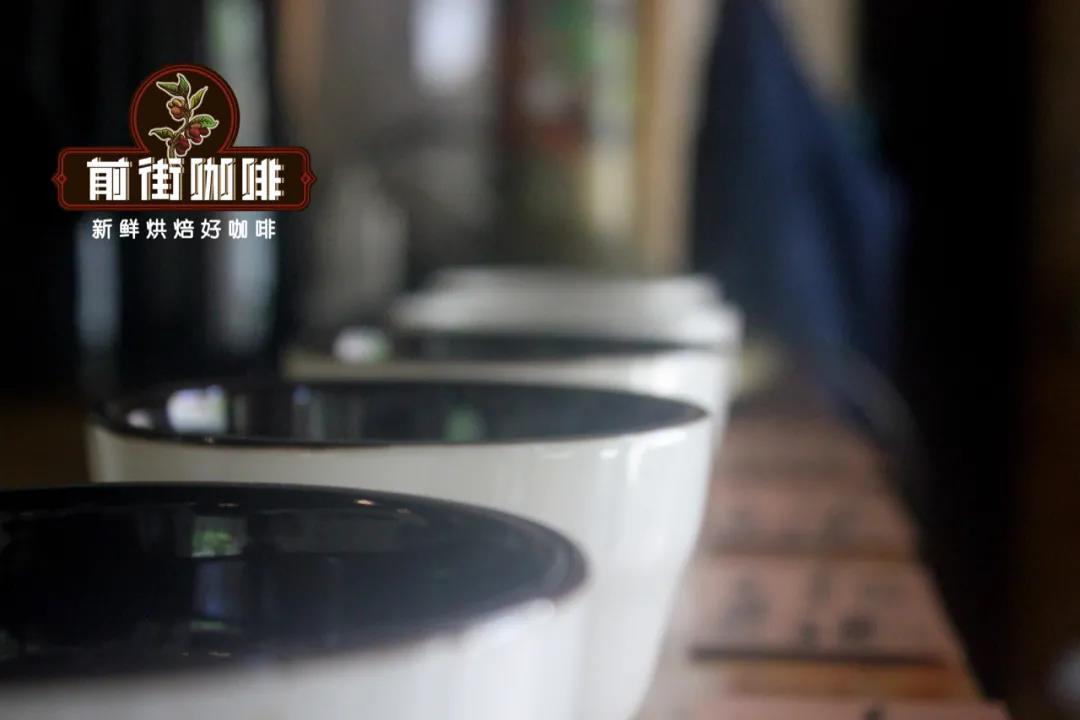
Suggestion on brewing two Yunnan coffee beans in Qianjie Coffee
The V60 conical filter cup is recommended in the front street. V60 cup mouth is relatively large, coupled with its unique spiral curve ribs, so that the air can be discharged more easily to improve the extraction quality. The taste may not be thick enough, but its high concentration brings out the acidity and obvious aroma of Yunnan coffee is one of its major features.
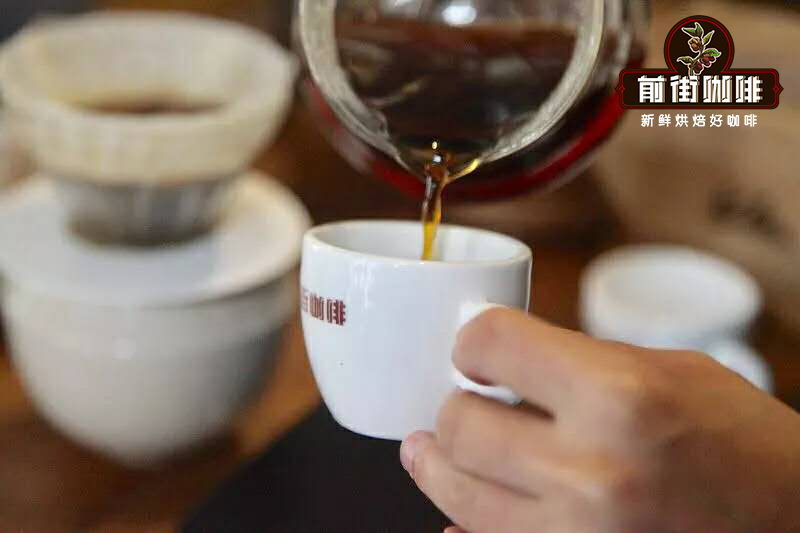
Filter cup: V60
Water temperature: 90-92 ℃
Powder / water ratio: 1:15
Degree of grinding: medium and fine grinding, that is, the thickness of fine sugar (VARIO 50: 57% pass rate of Chinese standard No. 20 screen)
Flushing and cooking technique: segmented extraction. Steam with 30 grams of water for 30 seconds, small flow circle injection to 124 grams, continue to inject water to 227 grams when the water level is about to be exposed to the powder bed, remove the filter cup when the water level is about to expose the powder bed, and the extraction time is 2 minutes.
Huaguoshan cooking flavor description: strong but not bitter, fragrant but not strong, flower fragrance, sweet melon in the middle, black tea feeling at the end.
Small coffee brewing flavor description: it smells nutty, with herbs, chocolate, caramel and a hint of acidity in the finish.
For more boutique coffee beans, please add private Qianjie coffee on Wechat. WeChat account: kaixinguoguo0925
Important Notice :
前街咖啡 FrontStreet Coffee has moved to new addredd:
FrontStreet Coffee Address: 315,Donghua East Road,GuangZhou
Tel:020 38364473
- Prev

Hawaiian Kona Coffee, the finest coffee beans in the world.
Hawaiian Kona coffee is indeed a treasure in the world and is not easy to find. The best Kona coffee is divided into three grades: ExtraFancy, Fancy and NumberOne. This third-class coffee is produced on manors and under natural conditions. But most of the coffee on the market that calls itself Kona contains less than 5% of the real Hawaiian Kona coffee. Another kind of no can be found in the United States.
- Next

American boutique coffee beans Guatemalan coffee
Guatemalan coffee is produced in the The Republic of Guatemala countries of northwestern Central America. The country's mountain forest area accounts for 2/3 of the country's area and is rich in high-quality coffee beans. Guatemalan coffee beans belong to bourbon coffee beans, which have a strong sour taste, mellow taste and slightly wild taste, and can be used as a single drink or for the preparation of comprehensive coffee. A cup of Guatemala
Related
- Detailed explanation of Jadeite planting Land in Panamanian Jadeite Manor introduction to the grading system of Jadeite competitive bidding, Red bid, Green bid and Rose Summer
- Story of Coffee planting in Brenka region of Costa Rica Stonehenge Manor anaerobic heavy honey treatment of flavor mouth
- What's on the barrel of Blue Mountain Coffee beans?
- Can American coffee also pull flowers? How to use hot American style to pull out a good-looking pattern?
- Can you make a cold extract with coffee beans? What is the right proportion for cold-extracted coffee formula?
- Indonesian PWN Gold Mandrine Coffee Origin Features Flavor How to Chong? Mandolin coffee is American.
- A brief introduction to the flavor characteristics of Brazilian yellow bourbon coffee beans
- What is the effect of different water quality on the flavor of cold-extracted coffee? What kind of water is best for brewing coffee?
- Why do you think of Rose Summer whenever you mention Panamanian coffee?
- Introduction to the characteristics of authentic blue mountain coffee bean producing areas? What is the CIB Coffee Authority in Jamaica?

